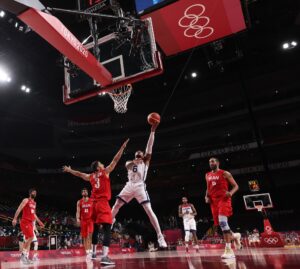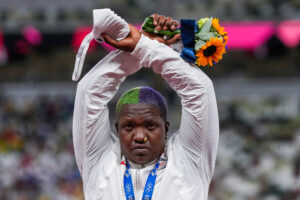On the heels of the 2020 Tokyo Olympic Games, we reflect on the unique power of sport and its ability to bring people, nations and communities closer together. This year’s Olympics brought new contributions to the table—six sports and discussions around sportsmanship. Despite the physical absence of political figures and global leaders this year, the Olympics have influenced social and political movements over the decades, including how athletes use their platforms to uplift the voices of others.
The early 1970s introduced the term “ping-pong diplomacy” when table tennis players from the U.S. and China first competed at the 31st World Table Tennis Championship despite heavy tensions between the two nations. The match was quickly recognized as the first step in mending relations between the two countries during the Cold War, as it resulted in the American and Chinese governments developing new back-channel communications with one another. Similar sentiments were made during the U.S.-Iran basketball game at the 2020 Tokyo Olympics. “[These] nations that haven’t had diplomatic relations for more than four decades and often are at vastly different ends of the political spectrum… There have been crippling economic sanctions levied on Tehran by Washington and a unilateral withdrawal from the world powers nuclear deal by former President Donald Trump. U.S. flags often being burned at rallies and protests in the streets of Tehran, and accusations in recent weeks that Iran has delayed a proposed prisoner swap to force a quick resumption of indirect nuclear talks,” wrote Tim Reynolds in his article for AP News.
Though there was little coverage on the interaction between teams, sports diplomacy signified how people can come together despite the political turmoil and coexist. “In general, I think people in different countries get along a whole lot better than their governments do,” U.S. coach Gregg Popovich said to AP News.
“Can [athletes and sports diplomacy] have what they were intended to do, which is bring us together instead of bringing us apart? It’s nice that we have this myriad of thought, athleticism, arts and humanities come together on one platform and just celebrate excellence.”

It’s possible that with the help of athletes from both nations participating in a sport based on shared values and love of the game, we can hope for a similar outcome to the ping-pong match between the U.S. and China in 1971. But instead of ping-pong, basketball becomes the catalyst in fostering intercultural understanding. While sports diplomacy is efficient in being the first step for countries to engage, despite high tensions and international disputes, it can play a much larger role in the world of culture sharing, instead of political and policy.
“The Olympics, this is a venue and time where sports transcends [pettiness] between governments,” Popovich commented. “There’s no surprise that the coaches enjoyed meeting each other and talking to each other, that the players showed sportsmanship. We just wish this happened in real life.”
At the “Diplomacy After Hours: The Power of Olympians, Paralympians, and Sports Diplomacy” discussion hosted on July 28, 2021, by the National Museum of American Diplomacy (NMAD), panelists focused on the contributions former Olympians and Paralympians made to sports diplomacy and moments in history.
John Register, Paralympian, and exchange sports alumnus, reflected on the concept of sports on a stage the size of the Olympics, asking, “Can [athletes and sports diplomacy] have what they were intended to do, which is bring us together instead of bringing us apart? It’s nice that we have this myriad of thought, athleticism, arts, and humanities come together on one platform and just celebrate excellence.”
Beyond bringing people together, Dr. Damion Thomas, curator of sports at the National Museum of African American History and Culture, reminded us that bringing countries’ cultures together does not mean that the cultures and identities of individual athletes were fully embraced on the national level.

The Olympics have played a huge historical role during movements for social justice and equality, and the efforts that Olympians, specifically BIPOC athletes, made during those times. “African Americans changed the meaning of athletic performances and used sports as a metaphor for equality,” said Dr. Thomas.
At the 1968 Olympic Games, American Olympians Tommie Smith and John Carlos each raised a black-gloved fist during the U.S. national anthem, “The Star-Spangled Banner”, as a statement for Black and African human rights. Australian silver medalist Peter Norman joined Smith and Carlos in wearing human rights badges on their jackets.
Similar to the Black Lives Matter movement, athletes have been using their platforms to support the cause. Former NFL player Colin Kaepernick started kneeling during the national anthem in protest to call attention to the issues of racial inequality and police brutality. Another athlete speaking up on social injustice is U.S. shot-putter and Olympian Raven Saunders who briefly held her arms above her head in the shape of an “X” as she was accepting her silver medal on the Olympic podium. The Black and queer Olympian stated the “X” represents “the intersection of where all people who are oppressed meet.”
















